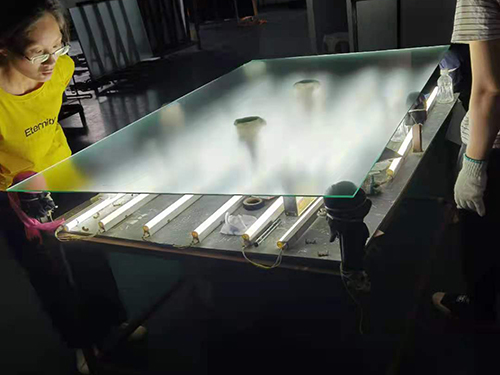AG glass equipment, also known as anti-reflective glass and anti-glare glass, is called Anti-glare glass in English, which is a kind of glass that is specially processed on the surface of the glass. Its characteristic is to change the reflective surface of the original glass into a matte non-reflective surface (the surface is uneven). The principle is to subject both sides or one side of high-quality glass sheets to special processing. Compared with ordinary glass, it has a lower reflectance. The reflectance of light is reduced from 8% to less than 1%. The technology creates a clear and transparent visual effect, allowing viewers to experience better sensory vision.

In our daily life, we all have the experience of being attacked by glare, partly from the glare light source, and partly from the reflection of the glare; when we operate the computer, we often cannot see the display content because of the reflection of the scene outside the display on the surface of the display. And trouble; another example is when we stop in front of the glass shop window to explore the scenery inside the window, the reflection of the glass surface often prevents you from clearly observing the scenery inside the window and so on. These are all caused by light reflection on the glass surface, because ordinary glass has a high reflectivity. To reduce the influence of light reflected by glass, matt (anti-reflection) treatment on the glass surface can have a good effect. AG glass (Anti-Glare Glass) products are made through a special chemical process, which is characterized by changing the reflective surface of the original glass into a matte diffuse reflective surface. It can blur the effect of reflection, prevent glare, and reduce the degree of reflection, reducing light and shadow. The anti-glare product has strong surface anti-corrosion and anti-scratch performance. Combined with the video imaging screen, a transparent anti-glare and anti-reflection screen can be formed, which solves the problem of reflection and glare caused by electronic video screens and image screens under environmental light sources, and improves the image quality. This effect remains unchanged under a large viewing angle. Anti-glare glass can reduce the interference of ambient light, increase the viewing angle and brightness of the display screen, reduce screen reflections, make the image clearer, the color more colorful, and the color more saturated, thereby significantly improving the display effect.
Purpose:
AG glass is generally used in PDP plasma TVs, PTV rear projection TVs, DLP TVs, touch screens, TV splicing walls, flat panel TVs, rear projection TVs, LCD industrial instrumentation and advanced picture frames.




















